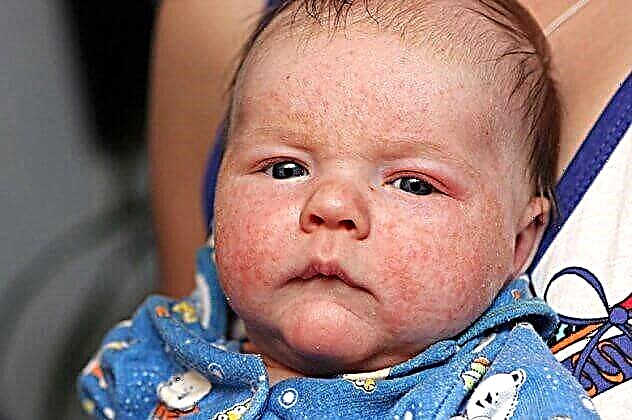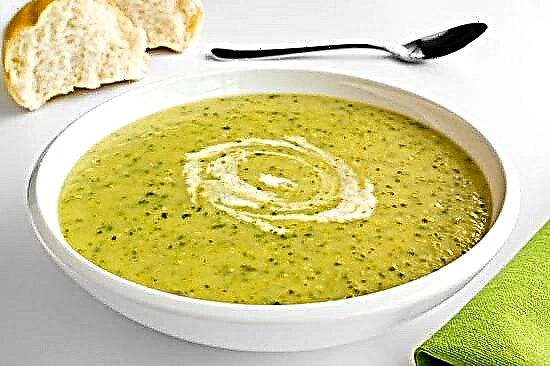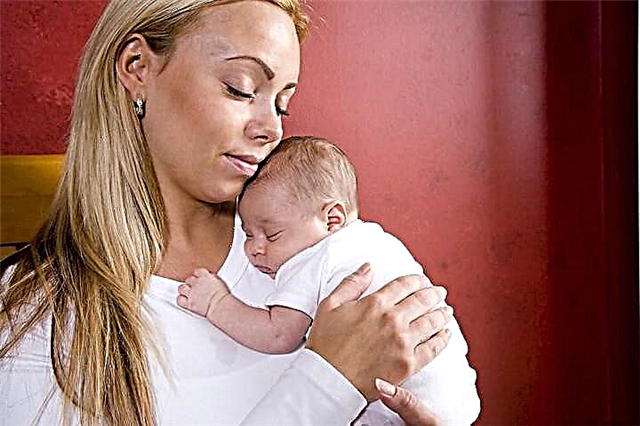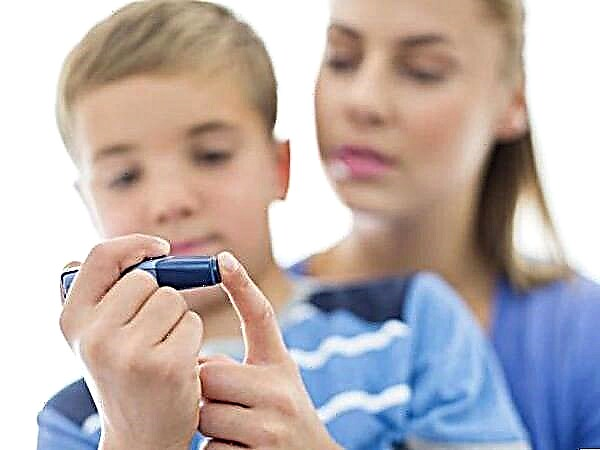Diathesis is a fairly common disease in infants. This is due to insufficient maturity of the baby's immune system. At its core, diathesis is a kind of allergic reaction to certain foods. Doctors often refer to it as atopic dermatitis.

Causes and symptoms of diathesis in an infant
[sc: rsa]
The main symptoms of diathesis in infants are skin rashes on the child's body.
In this case, the inflammatory process is not only external in nature, allergic manifestations are also observed on the internal organs and mucous membranes.
Also, among the symptoms of diathesis in infants, redness on the face, buttocks, arms and legs, diaper rash (especially in the groin and axillary folds, behind the ears and under the knees) is often observed. A yellowish crust may appear under the hair on the child's head, which must be carefully combed out after bathing, after having lubricated it with baby oil or cream.
The main factors affecting the appearance of diathesis in a child may be:
- excessive consumption of allergenic foods (citrus fruits, chocolate, foods with artificial flavors and colors) during pregnancy and breastfeeding;
- hereditary predisposition to allergies;
- violation of the activity of the digestive organs;
- violation of intestinal microflora;
- poor environmental situation;
- overfeeding the child;
- early introduction of complementary foods;
- incorrectly selected foods for the introduction of complementary foods, etc. (The first feeding of an infant - when and what to start feeding)
Diathesis is often a manifestation of intestinal dysbiosis in a child. It can also be a consequence of digestive problems such as: intolerance to the protein of cereal plants, lack of enzymes for the breakdown of cow's milk protein, etc.
Treatment of diathesis in newborns
Antihistamines. Allergy drugs of the 1st generation, in addition to the main action, have a mild sedative effect, therefore they can be prescribed in case of severe anxiety of the child, insomnia, constant crying. They are prescribed for 10-14 days with a change in the drug every 5 days. Drugs of choice: suprastin, tavegil, pipolfen.
Antihistamines 2nd generation have a pronounced antiallergenic effect, do not possess hypnotic activity, therefore, they can be prescribed for long-term use for 3-5 weeks. Drugs of choice: claritin, zyrtec, elastin.
Medicines:
- Desitin
- Bepanten
- Fenistil for babies
- Zinc ointment
The most effective method of dealing with diathesis is taking drugs that cleanse the child's body of toxins and allergens.
Enterosorbents (Polysorb, Enterosgel) - help to remove toxins and allergens from the body of the crumbs, eliminating the cause of skin rashes. They can also be taken by nursing mothers. Sometimes drugs are mixed with Sudocrem and applied to the rash.
A pediatrician should decide how to treat a child's diathesis.
First of all, any doctor will be advised to adjust the diet of the mother (if the baby is breastfed) and the baby. All allergenic foods should be excluded from the diet (What can a nursing mother eat while breastfeeding - a list of foods). In addition, a fairly common practice is the appointment of vitamin complexes for diathesis. They are able to maintain the necessary balance of vitamins and minerals in the child's body, help form the necessary enzymes to fight allergens.
Preparations for restoring normal intestinal microflora and treating dysbiosis:
- Probiotics
- Prebiotics
Diathesis symptoms can be treated with medication. Among them are antiallergic, adsorbents, enzyme preparations. The right treatment helps your baby, and with proper care, each of the symptoms goes away quickly.
For the treatment of infants from antihistamines (antiallergic) drugs, Fenistil is widely used. It is available in the form of drops and gel. "Fenistil" is the only antihistamine drug that can be used in children from one month old. "Fenistil" drops are taken orally, dissolving the required amount of the drug in 1 tsp. water.

Already after 45 minutes "Fenistil" removes the symptoms of rash, swelling and itching. It is necessary to treat the baby with medicines strictly according to the doctor's prescription. As a rule, "Fenistil" drops are prescribed 3 times a day. Fenistil in the form of a gel is used for topical treatment. It is applied in a thin layer on the baby's skin 1-2 times a day, depending on the severity of the disease.
Local treatment with other means is good for removing rashes and itching on the skin. Often pediatricians prescribe the drug Bepanten. "Bepanten-ointment" and "Bepanten-cream" are produced. In the case of dry skin, an ointment has the best therapeutic effect, it is absorbed faster into the skin of a small patient.

The active ingredient of the drug "Bepanten-ointment" is dexpanthenol, a precursor of vitamin B5. Once in the baby's skin, provitamin is converted into vitamin B5, which, in turn, accelerates regeneration (tissue restoration), skin mitosis (cell division), and strengthens collagen fibers.
"Bepanten-ointment" is allowed for diathesis even in newborns. You need to smear all the affected areas of the skin with a thin layer. Many mothers with diathesis in their babies use only "Bepanten-ointment".
"Fenistil" and "Bepanten-ointment" remove the symptoms of diathesis, the rash gradually disappears, the itching decreases. It must be remembered that the treatment of diathesis with medicines removes only the manifestations of its various forms, and not the cause.
Treatment of diathesis with folk remedies
The main recommendations for the treatment of diathesis with alternative methods are:
- Eggshell is a fairly common treatment for diathesis.. The shell is removed from a well washed (preferably with soda) boiled egg and dried for 2-3 days in a dry and warm place. Then the shell is crushed into powder (for example, using a coffee grinder) and given to the child twice a day, 1 teaspoon. The shells can be given along with food, lemon juice, or other additives. The course of treatment is 2-3 months. This method relieves acute manifestations of diathesis due to the high content of calcium.
- Bathing in a string and chamomile. Dry herb of a string and chamomile is filled with water and boiled for 15 minutes. Next, you need to let it brew for 30 minutes, then strain and add it to the baby bath before evening bathing. Very well relieves itching and inflammation of the skin.
- Preparation of fir oil-based ointment. You need 1 part of fir oil mixed with 3 parts of any baby cream (preferably with vitamin C). The affected areas of the skin are lubricated twice a day - in the morning and in the evening.
- Dandelion root tincture. One tablespoon of medicinal dandelion roots is poured with one glass of boiling water, infused for 1.5-2 hours in a warm place in a tightly closed container, after which it is well filtered. It is necessary to take the resulting tincture in 50 ml half an hour before meals, preferably 3 times a day.
- Tincture of crushed burdock root. It is prepared and taken in the same way as dandelion root tincture.
Before using any folk remedies, you should consult with your pediatrician.
[sc name = ”ads”]
In order to prevent the appearance of diathesis in an infant with a tendency to allergies, it is necessary:
- correctly introduce complementary foods (preferably from hypoallergenic vegetables);
- exclude or minimize the use of sugar, honey, chocolate and other sweets;
- exclude fish and fish broths for children under one year old;
- exclude citrus fruits, butter and fatty cookies from the diet;
- inject fruit purees and juices with caution. Citrus fruit juices, carrot, pomegranate, tomato, grape juices should be excluded;
- introduce eggs with care (starting with the yolk or quail egg).
It should be noted that with a correct diet, diathesis in children after a year in most cases passes without a trace. However, if you do not adhere to such a diet, diathesis can turn into more complex manifestations - food allergies, bronchial asthma, eczema, etc. The health of children in this case entirely depends on the conscientiousness of their parents.
More about infant health
- Food allergies in children
- Staphylococcus aureus in infants (Symptoms, Treatment)
- Chickenpox in infants: symptoms, treatment
- Pimples on the face of a newborn - causes and how to get rid
- Miliaria in newborns ─ how to distinguish, how to prevent and what to do?
Food allergy or diathesis in infants
Diathesis - School of Doctor Komarovsky
Everyone has heard the word "diathesis", but no one knows what it is. What do you know about allergic dermatitis? It is about him, about his symptoms, causes of occurrence and how to deal with him, Dr. Komarovsky will tell the singer Vera Brezhneva:



